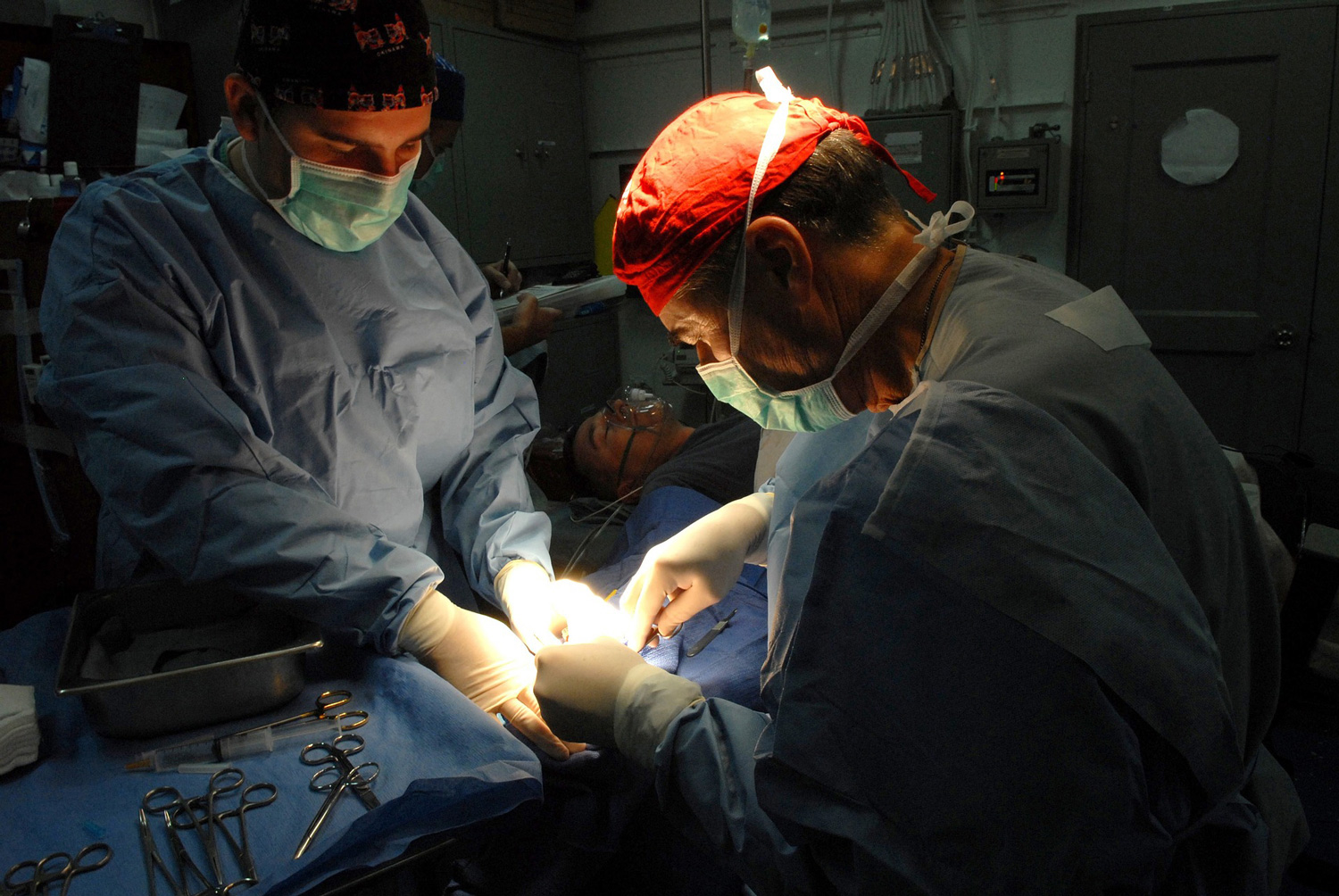Bair Hugger Lawyers
If you suffered deep-tissue infections after being treated with the Bair Hugger device you may be entitled to compensation. Call us now if you need assistance with your legal representation.
Bair Hugger Lawyers
If you suffered deep-tissue infections after being treated with the Bair Hugger device you may be entitled to compensation. Call us now if you need assistance with your legal representation.

Bair Hugger Creator Joins the Fight Against Device’s Surgical Infection Risk
What Is the Bair Hugger?
The Bair Hugger Forced Air Warming device is a system of disposable blankets and tubes that distribute warm air evenly across a patient’s body during surgery. This method of circulating heat over the patient ensures a regular body temperature is maintained, leading to faster recovery times and fewer instances of bleeding. Since its introduction in 1988, Dr. Augustine’s invention is currently used in over 80 percent of U.S. hospitals, and has been used to treat more than 180 million surgery patients.
However, in the nearly twenty years since the device was introduced, the dangers of Bair Hugger blankets are increasingly coming to light. Several patients have filed lawsuits claiming that they suffered severe deep-tissue infections after being treated with the Bair Hugger device. Pending litigation also includes claims that 3M, the current corporate owner and manufacturer of the Bair Hugger, knew about the possible risk of infection in patients but did not discontinue use of the devices.
Inventor Agrees That the Device Carries Risk of Infection
The Bair Hugger was created by Minnesota anesthesiologist Dr. Scott D. Augustine. Although the device is still widely used and proved highly profitable for Dr. Augustine, he said in a recent New York Times article that he believes his invention can spread bacteria and cause hospital-acquired infections.
Dr. Augustine has taken many public actions to reduce the surgical infection risks of his Bair Hugger devices, including:
- Asking hospitals to stop using the device. Dr. Augustine has acknowledged that forced air warming devices can pick up bacteria from the surgical suite and recirculate it under the blankets and into a patient’s wound site. Patients who are receiving implants, such as artificial heart valves, knee replacements, and hip joints were identified as especially at risk.
- Suggesting illegal activities. Last year, Dr. Augustine wrote a letter to Arizant, then-owner of the device, accusing the company of attempting to cover-up known issues surrounding the Bair Hugger. Arizant has since been acquired by 3M.
- Inventing an alternative. Dr. Augustine has recently completed work on an alternative warming method for surgical patients that does not use forced air.
Why Are Post-Surgical Infections So Dangerous?
A deep-tissue infection can be much more difficult to access and treat than infections in topical wounds. As the air from the Bair Hugger infects inner tissues of a bodily cavity during surgery, the bacteria become trapped in the body after the wound is closed,  where it is allowed to grow and spread deep beneath the surface of the skin. If the infection continues to spread, a patient may have to undergo a second, third, or even fourth surgery to remove the implant and eradicate the infection at the source. As patients receiving replacement devices are often older, they may be immunocompromised or unable to fight off the infection, leading to early death.
where it is allowed to grow and spread deep beneath the surface of the skin. If the infection continues to spread, a patient may have to undergo a second, third, or even fourth surgery to remove the implant and eradicate the infection at the source. As patients receiving replacement devices are often older, they may be immunocompromised or unable to fight off the infection, leading to early death.
Another risk to patients is the dangerous nature of infections they can contract inside a hospital. An improperly disinfected surgical room may carry any number of bacterial agents, including the super-bug Methicillin-resistant Staphylococcus aureus (MRSA). These bacteria are resistant to many commonly-used antibiotics, and is extremely hard to treat.
Bair Hugger Creator Joins the Fight Against Device’s Surgical Infection Risk
What Is the Bair Hugger?
The Bair Hugger Forced Air Warming device is a system of disposable blankets and tubes that distribute warm air evenly across a patient’s body during surgery. This method of circulating heat over the patient ensures a regular body temperature is maintained, leading to faster recovery times and fewer instances of bleeding. Since its introduction in 1988, Dr. Augustine’s invention is currently used in over 80 percent of U.S. hospitals, and has been used to treat more than 180 million surgery patients.
However, in the nearly twenty years since the device was introduced, the dangers of Bair Hugger blankets are increasingly coming to light. Several patients have filed lawsuits claiming that they suffered severe deep-tissue infections after being treated with the Bair Hugger device. Pending litigation also includes claims that 3M, the current corporate owner and manufacturer of the Bair Hugger, knew about the possible risk of infection in patients but did not discontinue use of the devices.
Inventor Agrees That the Device Carries Risk of Infection
The Bair Hugger was created by Minnesota anesthesiologist Dr. Scott D. Augustine. Although the device is still widely used and proved highly profitable for Dr. Augustine, he said in a recent New York Times article that he believes his invention can spread bacteria and cause hospital-acquired infections.
Dr. Augustine has taken many public actions to reduce the surgical infection risks of his Bair Hugger devices, including:
- Asking hospitals to stop using the device. Dr. Augustine has acknowledged that forced air warming devices can pick up bacteria from the surgical suite and recirculate it under the blankets and into a patient’s wound site. Patients who are receiving implants, such as artificial heart valves, knee replacements, and hip joints were identified as especially at risk.
- Suggesting illegal activities. Last year, Dr. Augustine wrote a letter to Arizant, then-owner of the device, accusing the company of attempting to cover-up known issues surrounding the Bair Hugger. Arizant has since been acquired by 3M.
- Inventing an alternative. Dr. Augustine has recently completed work on an alternative warming method for surgical patients that does not use forced air.
Why Are Post-Surgical Infections So Dangerous?
A deep-tissue infection can be much more difficult to access and treat than infections in topical wounds. As the air from the Bair Hugger infects inner tissues of a bodily cavity during surgery, the bacteria become trapped in the body after the wound is closed, where it is allowed to grow and spread deep beneath the surface of the skin. If the infection continues to spread, a patient may have to undergo a second, third, or even fourth surgery to remove the implant and eradicate the infection at the source. As patients receiving replacement devices are often older, they may be immunocompromised or unable to fight off the infection, leading to early death.
Another risk to patients is the dangerous nature of infections they can contract inside a hospital. An improperly disinfected surgical room may carry any number of bacterial agents, including the super-bug Methicillin-resistant Staphylococcus aureus (MRSA). These bacteria are resistant to many commonly-used antibiotics, and is extremely hard to treat.
